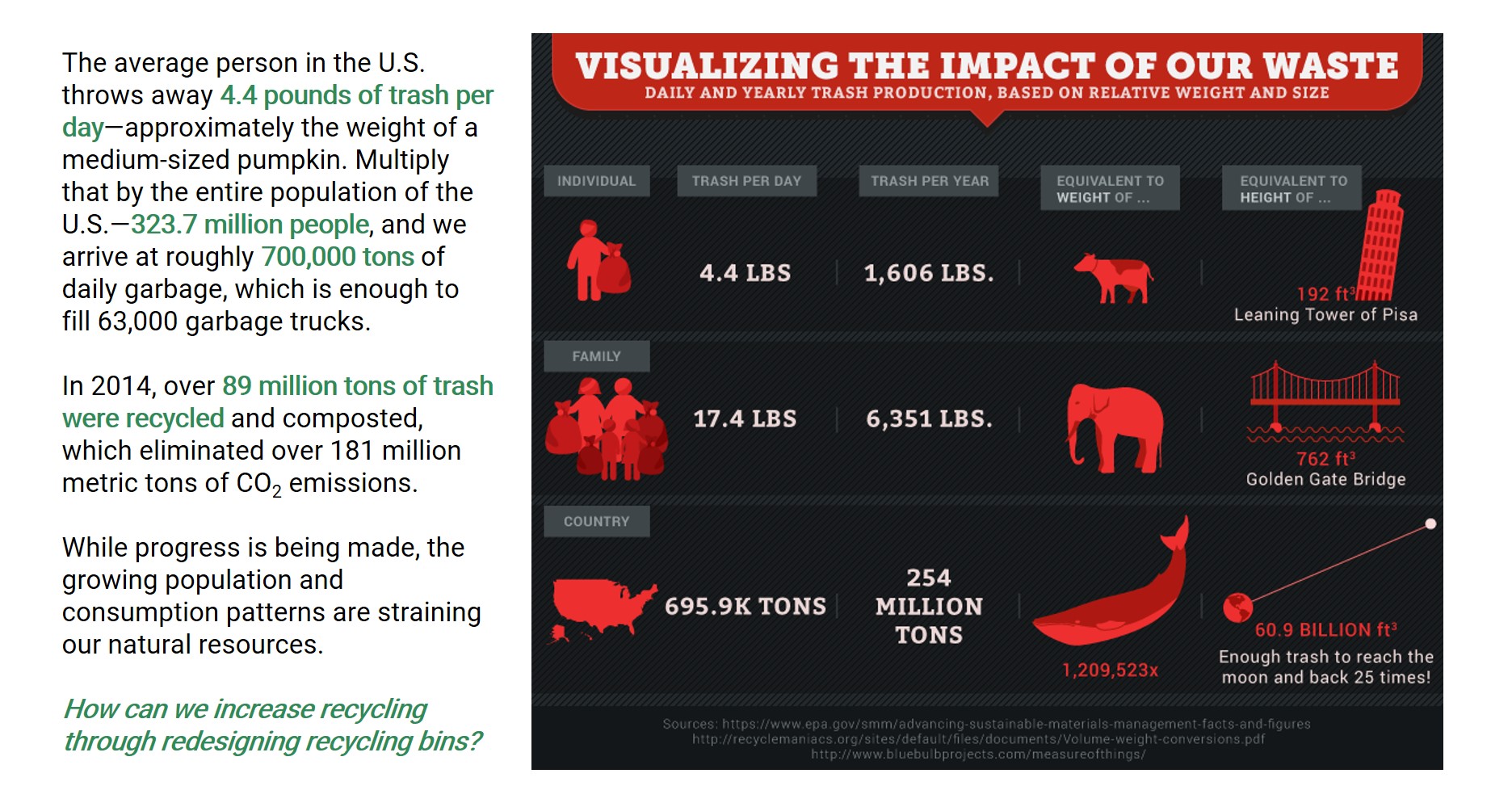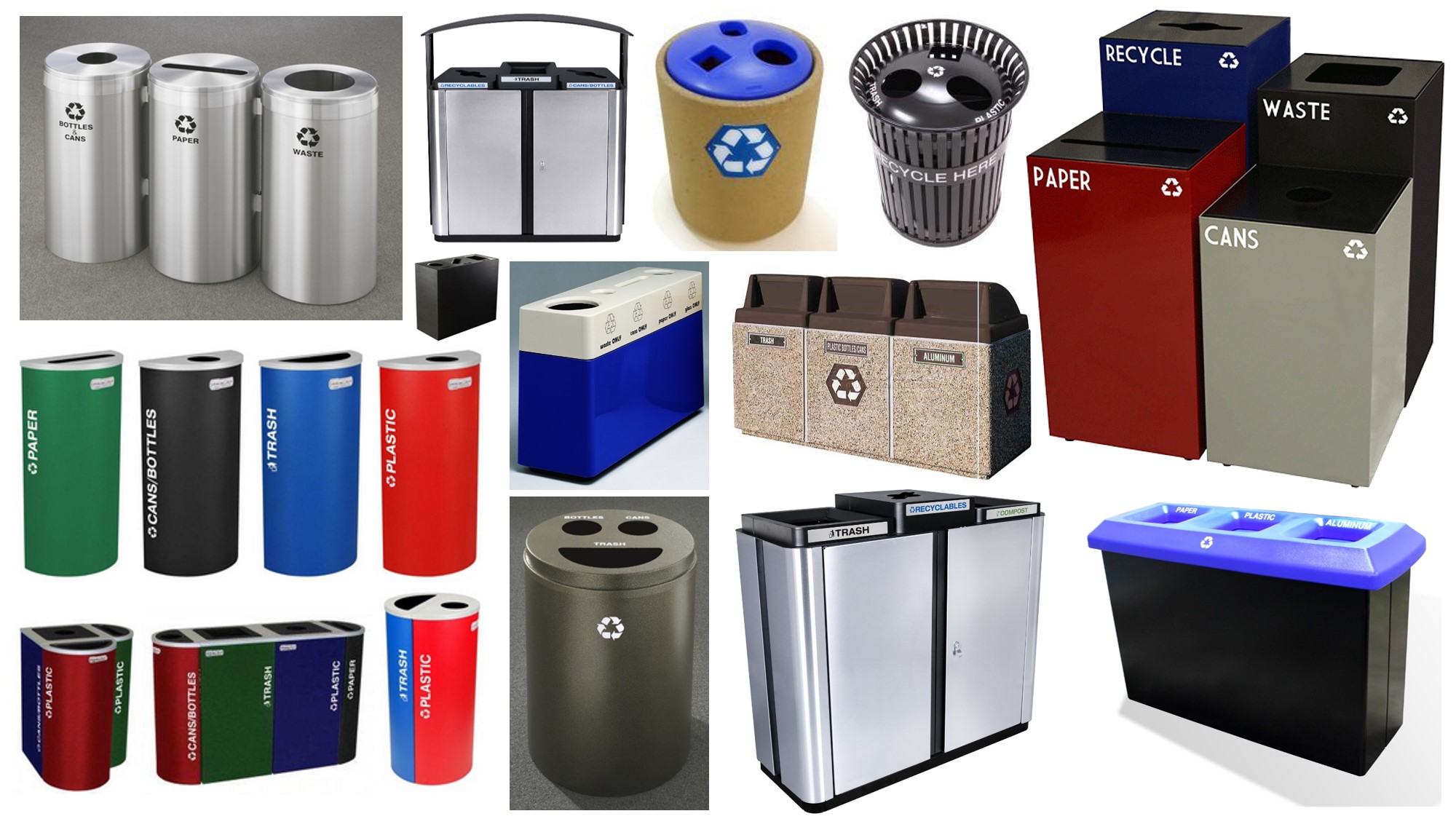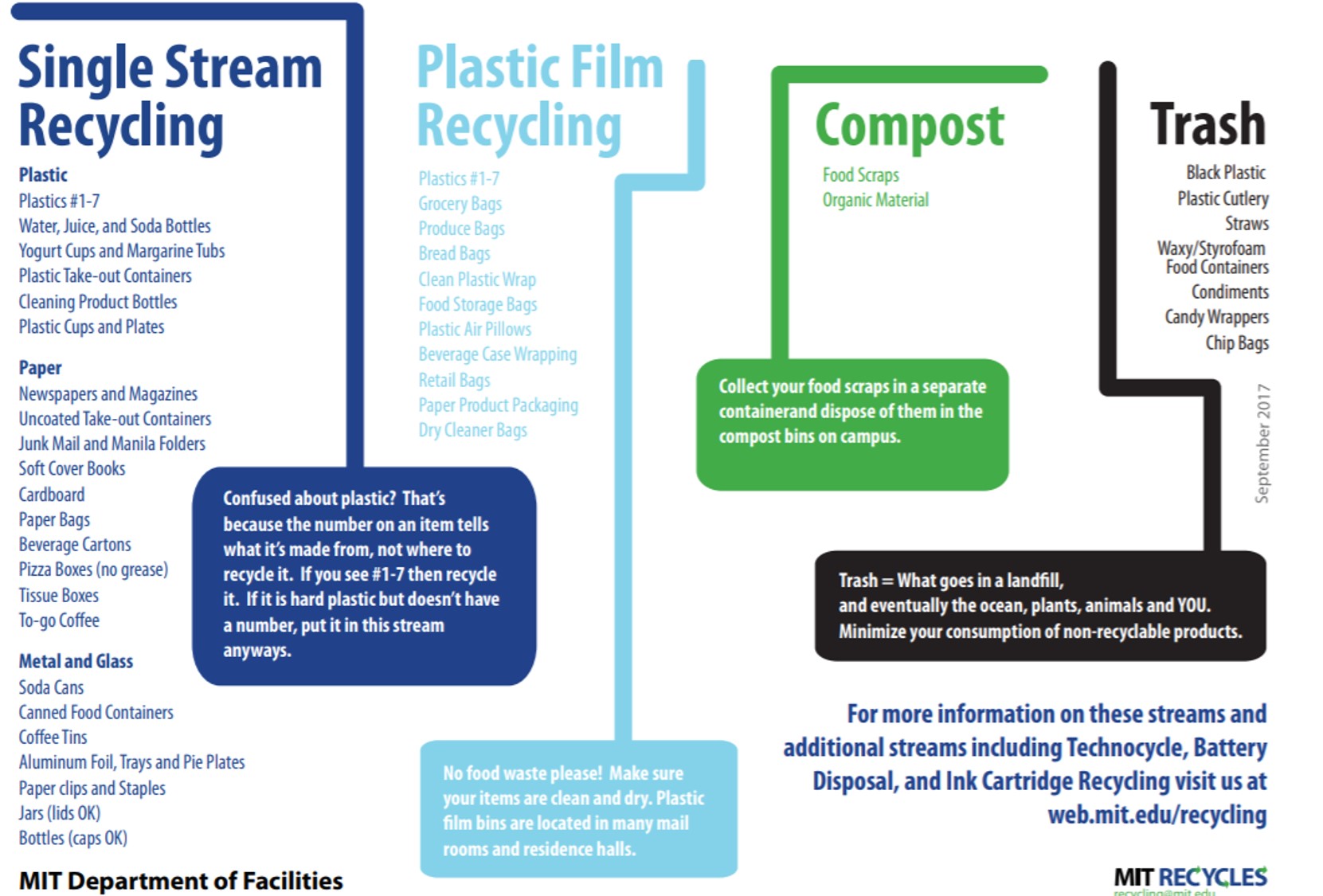The State of Waste in the U.S.

Existing Recycling Bin Solutions
There is a wide range of recycling bin solutions designed for outdoor and indoor public spaces. The size, material, design, and type of recycling bins are selected based on local regulatory requirements, functional concerns (e.g., pest prevention, odor elimination, etc.), and aesthetic coherence with the surrounding environment. Below is a sampling of various recycling bin designs often found in public spaces such as schools, libraries, and offices.

Recycling at MIT
How is recycling managed at MIT? The recyclable waste stream is divided into four main categories: Single-Stream, Plastic Film, Compost, and Trash. The graphic below details the items included in each category. MIT Recycling also manages recycling streams for e-waste, books, clothing, yard waste, wood, metal, tires, and materials from construction and development.
MIT's Recycling Program strives to decrease trash and increase single-stream recycling from year to year. 3,097 tons of trash were collected in 2014, and this decreased to 2,867 tons in 2016. While composting decreased from 195 tons in 2014 to 179 tons in 2016, single-stream recycling increased from 1,277 tons in 2014 to 1,430 tons in 2016.
